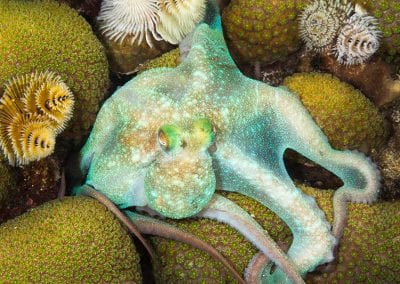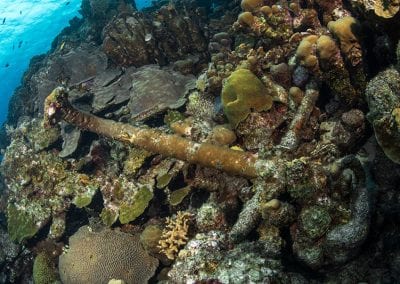“Shoot for the moon. Even if you miss, you’ll land among the stars.” – Norman Vincent Peale
It is often said, “A picture is worth 1000 words,” and so it is with Gerard Cachon’s astrophotography of Bonaire’s Willemstoren Lighthouse.
The Bonaire Insider came across this stellar (pun intended) and incredible image of the Milky Way spanning Bonaire’s Willemstoren Lighthouse and keeper’s house, and we asked the photographer, frequent visitor Gerard Cachon, to tell us how he was able to capture this intriguing and spectacular, image.
Gerard has been coming to Bonaire since the early 1990s, mostly to dive. He began underwater photography in 2009 with a film camera and switched to digital in 2011. He told us that as amazing as Bonaire is underwater to experience and to photograph, Bonaire has fantastic top-side photographic opportunities – seascapes, people, and birds, just to name a few. In 2016 he became interested in astrophotography and he wanted to give it a try in Bonaire.
Location is everything in astrophotography.
You need dark skies for astrophotography, which rules out the center part of Bonaire. BOPEC is quite bright, so it limits the northwestern locations. Washington Park is closed at night, but it would probably be awesome. (Gerard hopes to sneak a pic of Boca Slagbaai at night someday!). The east coast is very dark and has many great locations, but isn’t easy to navigate at night. The southern part of the island is the most accessible and definitely dark enough, so that is where he thought to take his first stab. He tells us:
My plan was to try to incorporate the Willems Toren lighthouse with the Milky Way. I was visiting the island during a new moon, which is ideal – a full moon is very bright and will often eliminate the possibility of a Milky Way shot. And we had relatively clear skies, which seems to be the biggest challenge on Bonaire – even when it doesn’t rain there are often many clouds in the sky, especially at night.
In the summertime the center of the Milky Way (i.e., the bright/thick section) is visible shortly after sunset, so you can already be shooting by 8:30 pm. (In April the center of the Milky Way is most visible from 1 am-4 am in the morning. It takes more commitment to shoot in April!). The Milky Way center will also be relatively high in the sky in the summer, say 45 degrees or higher. This has pros and cons: clouds are less likely to block the Milky Way when they are high in the sky, but getting the full arc into a picture is more challenging (you need a wide lens). If you want to get information about when and where the Milky Way will be, I highly recommend an app call PhotoPils. If you care about the position of the sun, moon or Milky Way at any time of the year in any location on the planet, then you will find this app to be amazing.
How to shoot the Milky Way and the recommended camera equipment.
There are two main ways to shoot the Milky Way. The simplest is to take a single shot. You will not get the entire Milky Way in the frame (even with a very wide-angle lens) and it will look like a straight band through the photo. The second way is to take a series of shots and then to stitch them together as a panorama. When you see pictures that capture the full arc of the Milky Way, they are using this second technique.
In terms of equipment, it is best if you have a camera that is good with low light – full frame (e.g., Canon 5D, Sony A7R, Nikon 850) is generally best, but certainly not required. I have seen very nice shots with APS-C sized sensors (Canon 7D, Sony A6500, Nikon D7300), but I doubt you could make a “wow” shot with a cell phone, even the latest ones.
For your lens, wide and fast is best. I used a Rokinon 24mm f1.8. I recommend 24mm or wider – many people use 14mm. Ideally, you would have a lens with f2.8 or wider aperture (smaller f-stop), but I have seen people take some good photos with an f4.0 lens. The recently announced Sigma 14mm f1.8 is the dream lens for astrophotography – very sharp, very fast and very wide.
Finally, you will absolutely need a reasonably steady tripod. Many people argue that you need a shutter cable release, but I don’t use one.
Practice makes perfect, especially with astrophotography.
Once you have the equipment, the idea, and the conditions, you can head south to try your luck at getting a shot. My vision was to take the lighthouse in the center of the frame with the Milky Way arching over it symmetrically. I actually did take that shot, but I didn’t like it when I saw it–there was too much empty space under the arch and it was too symmetric. Fortunately, I parked near the ruin of a small building near the lighthouse. Looking at the building, I realized I could put that in the foreground and use the lighthouse in the background, helping to fill the space under the Milky Way. But the building needed something else, so I told my son to enter it with his mobile on flashlight mode. That seemed to do the trick.
The actual picture is composed of ten vertical shots (overlapping them by about 33%), each taken at ISO 6400 with a 15-second exposure (which is why you need the tripod) and shooting in RAW mode (not JPG). I find 15-20 seconds to be the ideal duration for each exposure – any shorter and you don’t capture enough light, any longer and you start to get star trails. That said, photography is about creatively breaking rules.
Completing the image in post-processing.
The last part of taking a Milky Way shot is the hardest – the post-processing. I use Lightroom and you will need something comparable. To make a long story short, you need to work with the white balance, do noise correction, pull down the shadows in the sky and pull them up in the ground, increase the whites and decrease the blacks in the sky, etc. It definitely takes some experimentation and there are a number of tutorials online that go into the details.
An interesting feature of astrophotography is that the final product will not and does not look like what you see with your eyes. You can see the Milky Way with your eyes, but even after letting your eyes adjust to the dark, it is not nearly as brilliant as what the camera captures. This bothers some people, but not me. The camera is a tool to see what we would otherwise not see. It is no different than using strobes underwater – without them, we would miss the full spectrum of gorgeous colors on the reef.
About the photographer, Gerard Cachon.
Gerard is married with four children. The entire family has been enjoying Bonaire ever since the kids could walk. They love it so much that they are now building a home on the island (i.e., a storage locker for the dive and camera gear). Gerard is a business school professor, but for fun likes to travel, hike, dive and combine all of those activities with photography.

(Source: Bonaire Insider Reporter)
















